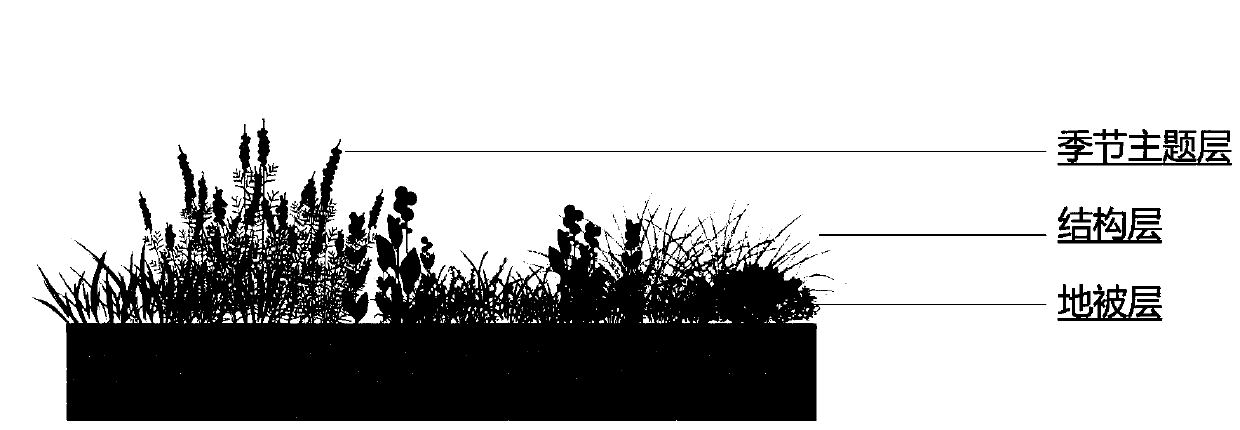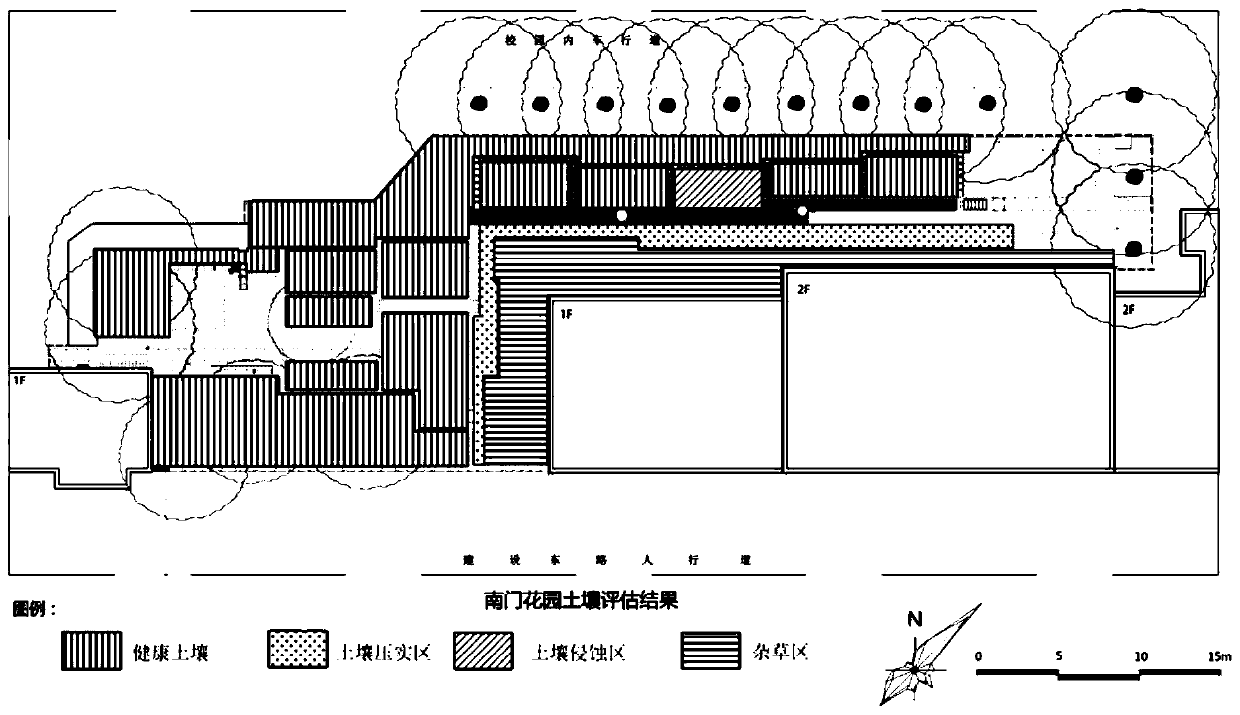Plant community construction method
A plant community and construction method technology, applied in the direction of botany equipment and methods, plant cultivation, site preparation methods, etc., can solve the problem of low aesthetic effect requirements of small-scale urban green space, lack of ground cover plant aesthetic thinking, plant community research and There are not many problems, to achieve the effect of reducing site maintenance and management costs and manpower and material resources, promoting the safe construction of communities, and ensuring the effect of construction
- Summary
- Abstract
- Description
- Claims
- Application Information
AI Technical Summary
Problems solved by technology
Method used
Image
Examples
Embodiment 1
[0051] This embodiment provides a method for establishing an artificial ground cover plant community, which mainly includes site preparation (evaluation and improvement of soil quality), plant community establishment, and continuity design.
[0052] The first step is to evaluate the soil quality. Firstly, the site soil is evaluated from three aspects: the site land use history and soil, the current vegetation and soil, topography, hydrology and soil, so as to clarify the parts of the site soil that need to be preserved and protected, and the needs The repaired part, the removed part, the part that can be effectively used or transformed and the part that cannot be used, and the soil information collected above will be graphically expressed, such as the soil habitat zoning map of the site, and based on this Site soil improvement: (1) Site soil use history and soil, that is, in the long-term site evolution process, the site soil may undergo great changes due to changes in land use...
Embodiment 2
[0057] This embodiment provides a design for the artificial ground cover plant community structure. In practice, the vertical structure is divided into three layers, including a ground cover layer and two planting layers. The ground cover layer uses pine forest and gravel as the ground covering material, and the planting layer adopts a two-layer structure of structural layer + seasonal theme layer. In the structural layer, one plant was selected as the construction species of the community, and in the seasonal theme layer, two plants were selected as the dominant species.
[0058] In the sun habitat, Sedum sedum was used as the construction species, and two community models were formed, A1 (Sedum sedum + stachys syringae + wood spring chrysanthemum) and A2 (Sedum sedum + yarrow + ground cover carnation), With Phalaenopsis as the constructing species, two community patterns were established: B1 (Pascophyllum + Rushgrass + Carex laoyu) and B2 (Physeophyllum + Huoxiang + Penniset...
Embodiment 3
[0061] This embodiment provides a design for the artificial ground cover plant community structure. In practice, the vertical structure is divided into three layers, including a ground cover layer and two planting layers. The ground cover layer uses pine forest and gravel as the ground covering material, and the planting layer adopts a two-layer structure of structural layer + seasonal theme layer. In the structural layer, one plant was selected as the construction species of the community, and in the seasonal theme layer, two plants were selected as the dominant species.
[0062] In the shade habitat, the broad-leaved Ophiopogon japonicus was used as the construction species, and two community models were constructed, C1 (Ophiopogon japonicus broad-leaf + Rush + green onion) and C2 (Ophiopogon broad-leaved + Equisetum + Oxalis safflower). Kidney fern is the constructing species, and it has two community patterns: D1 (kidney fern + hosta + sex) and D2 (kidney fern + alum root ...
PUM
 Login to View More
Login to View More Abstract
Description
Claims
Application Information
 Login to View More
Login to View More - R&D
- Intellectual Property
- Life Sciences
- Materials
- Tech Scout
- Unparalleled Data Quality
- Higher Quality Content
- 60% Fewer Hallucinations
Browse by: Latest US Patents, China's latest patents, Technical Efficacy Thesaurus, Application Domain, Technology Topic, Popular Technical Reports.
© 2025 PatSnap. All rights reserved.Legal|Privacy policy|Modern Slavery Act Transparency Statement|Sitemap|About US| Contact US: help@patsnap.com



